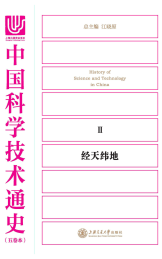
并列正书名: History of Science and Technology in China
主要责任者: 江晓原
责任方式: 主编
出版者: 上海交通大学出版社
出版地: 上海
字数: 389 千字
页码: 1-514
开本: 16
中图分类号: N092
分辑名:五卷本
语种:中
定价:470.00
出版时间:2015-.1
丛书多卷书否:是
书目简介:本册工具书共收录64条词条。
被引频次:8
| 词条 | 中国科学技术通史·经天纬地 |
| 类别 | 中文百科知识 |
| 释义 |  并列正书名: History of Science and Technology in China 主要责任者: 江晓原 责任方式: 主编 出版者: 上海交通大学出版社 出版地: 上海 字数: 389 千字 页码: 1-514 开本: 16 中图分类号: N092 分辑名:五卷本 语种:中 定价:470.00 出版时间:2015-.1 丛书多卷书否:是 书目简介:本册工具书共收录64条词条。 被引频次:8 |
| 随便看 |
开放百科全书收录579518条英语、德语、日语等多语种百科知识,基本涵盖了大多数领域的百科知识,是一部内容自由、开放的电子版国际百科全书。